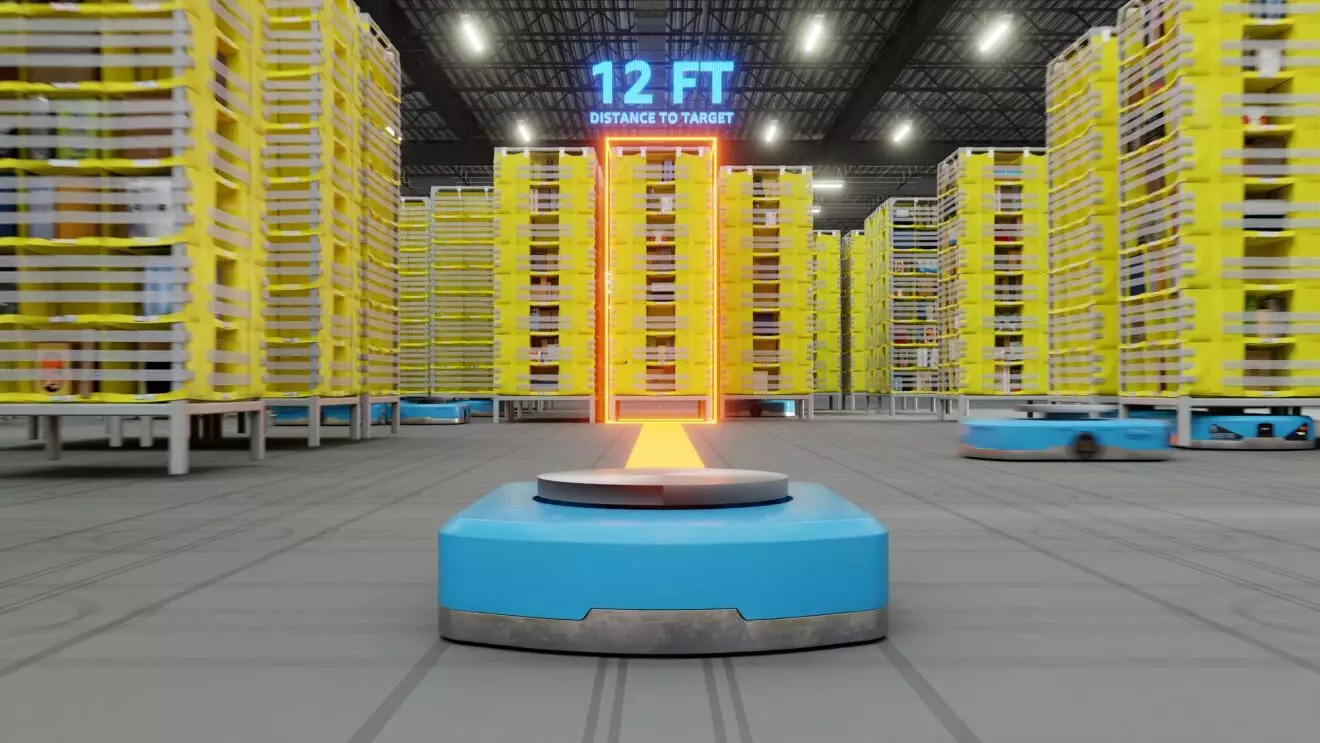Amazon’s rapid expansion into robotics signifies far more than a mere technological upgrade; it symbolizes a fundamental shift in the logistics and warehousing industry. With over one million bots deployed in just thirteen years, Amazon has transcended traditional operational models, transforming its fulfillment centers into sprawling hubs of automation. This scale of deployment makes it arguably the most ambitious robotic enterprise in corporate history. Such a vast integration indicates a clear strategic intent: to dominate the supply chain landscape through relentless efficiency. But beyond the impressive numbers, it raises a question—are we witnessing a new industrial revolution or merely the latest chapter in corporate mechanization? The deployment of these bots is not just about faster deliveries; it’s about rewriting the very definition of human labor’s role in logistics.
The Power of AI-Enhanced Robotics: Smarter, Faster, More Efficient
What sets Amazon’s robotic evolution apart is the infusion of sophisticated AI technology. The company’s recent introduction of DeepFleet, a generative AI foundation model, hints at a future where robots are not just moving items blindly but are actively optimized for maximum efficiency. This AI system enables the entire robotic fleet to coordinate in real time, slashing travel time by an estimated 10%. Such improvements translate directly into shorter delivery times and lower costs—cornerstones of Amazon’s competitive advantage. The newest robots, like Vulcan, further demonstrate this innovation. Equipped with cameras, suction cups, and tactile sensors, Vulcan represents the convergence of mechanical prowess and sensory intelligence, inching closer to autonomy that could eventually rival human adaptability. This level of sophistication is a testament to how AI is no longer a supporting player but the engine driving robotic intelligence, promising to redefine fulfillment logistics on a global scale.
The Human Cost: From Repetition to Relevance
One of the most contentious aspects of Amazon’s automation surge is its impact on human workers. Critics argue that replacing manual labor with robots erodes job security and devalues human work. Yet, Amazon’s narrative counters this perspective by highlighting the transformation of roles—from menial, repetitive tasks to oversight and management positions that demand higher skills and offer better pay. Neisha Cruz’s story is emblematic: after years of physically demanding work, she transitioned into a supervisory role earning significantly more. This suggests that automation may allow humans to escape mundane tasks, adapting into roles that require oversight of advanced systems. However, whether this transition is as widespread or as smooth as Amazon claims remains questionable. Beneath the surface, there’s a risk that the human workforce could become increasingly marginalized, with the most vulnerable laborers facing job losses and displacement. Balancing innovation with social responsibility remains the critical challenge for such corporations.
The Long-Term Implications: Efficiency versus Ethical Dilemmas
The numbers around Amazon’s robotic throughput are staggering—billions of packages shipped annually, with productivity per employee escalating exponentially. But what does this mean for the broader economy and society? Efficiency gained from robotic automation is undeniable; it offers faster delivery, lowered costs, and potentially cheaper prices for consumers. Still, this progress invites ethical dilemmas about the future of work, income disparity, and the societal value of human labor. Will society adapt to such a swift technological shift, or will it exacerbate unemployment and inequality? Amazon’s automation showcases a future where human workers might become unnecessary in their current forms, raising profound questions about purpose and fairness. As AI-driven bots become more intelligent and capable, society must confront the uncomfortable truth: technological progress is not neutral and often paves the way for economic upheaval.
The Inevitable Future: Automation as a Double-Edged Sword
There’s no denying that Amazon’s robotic revolution is likely to accelerate, pushing even more tasks towards automation. While this technological wave offers undeniable benefits—speed, cost savings, and operational scale—it also fuels a future filled with uncertainty. Companies that prioritize efficiency might outmaneuver competitors, but at what societal cost? Will human workers find meaningful roles in an increasingly automated economy, or will they become relics of a bygone era? The challenge lies not in halting technological advancement but in guiding its development toward a sustainable and equitable future. As Amazon continues to refine and expand its robotic capabilities, policymakers, industry leaders, and society at large must deliberate on how to harness these innovations for widespread benefit without sacrificing social cohesion. The era of robotic dominance is here—and its course will define the landscape of work and society for decades to come.

